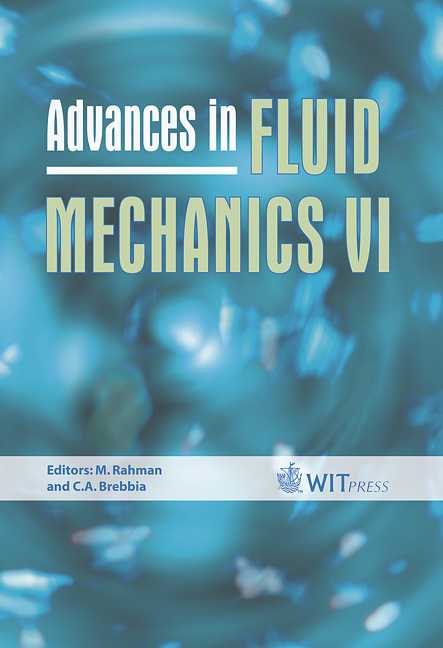Hot Spots And Nonhydraulic Effects In Surface Gravity Flows
Price
Free (open access)
Transaction
Volume
52
Pages
10
Published
2006
Size
393 kb
Paper DOI
10.2495/AFM060181
Copyright
WIT Press
Author(s)
T. B. Moodie, J. P. Pascal & S. J. D. D’Alessio
Abstract
Surface gravity currentswhose flowdynamics aremodified by incoming solar radiation are of importance in the study of mechanisms related to the thermal bar in dimictic lakes as well as the spread of pollutants on the surfaces of reservoirs, lakes and oceans. We shall present results for such surface flows showing their dependence on various model parameters including the bottom slope, rate of heating and equation of state. The novel feature of this analysis is to show that the inclusion of a heat source term leads to the introduction of shear in the horizontal velocity field thereby ruling out the deployment of shallow-water theory with its depthindependent velocity field as a viable description of such flows. Calculations are presented to demonstrate that a purely hydraulic description will miss important dynamical features of the flows. Keywords: surface gravity currents, thermal enhancement, nonhydraulic effects. 1 Introduction A gravity current consists of the flow of one fluid within another when this flow is driven by the density difference between these fluids [1]. These currents are primarily horizontal, occurring as either top or bottom boundary currents or as intrusions at some buoyantly stable intermediate level. The density differences driving such flows may be due to salinity contrasts, as in oceanic settings [1], the presence of suspended material, as in the case of turbidity currents [2, 3], or temperature
Keywords
surface gravity currents, thermal enhancement, nonhydraulic effects.





